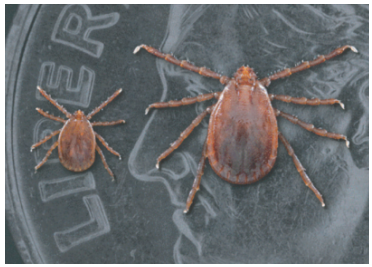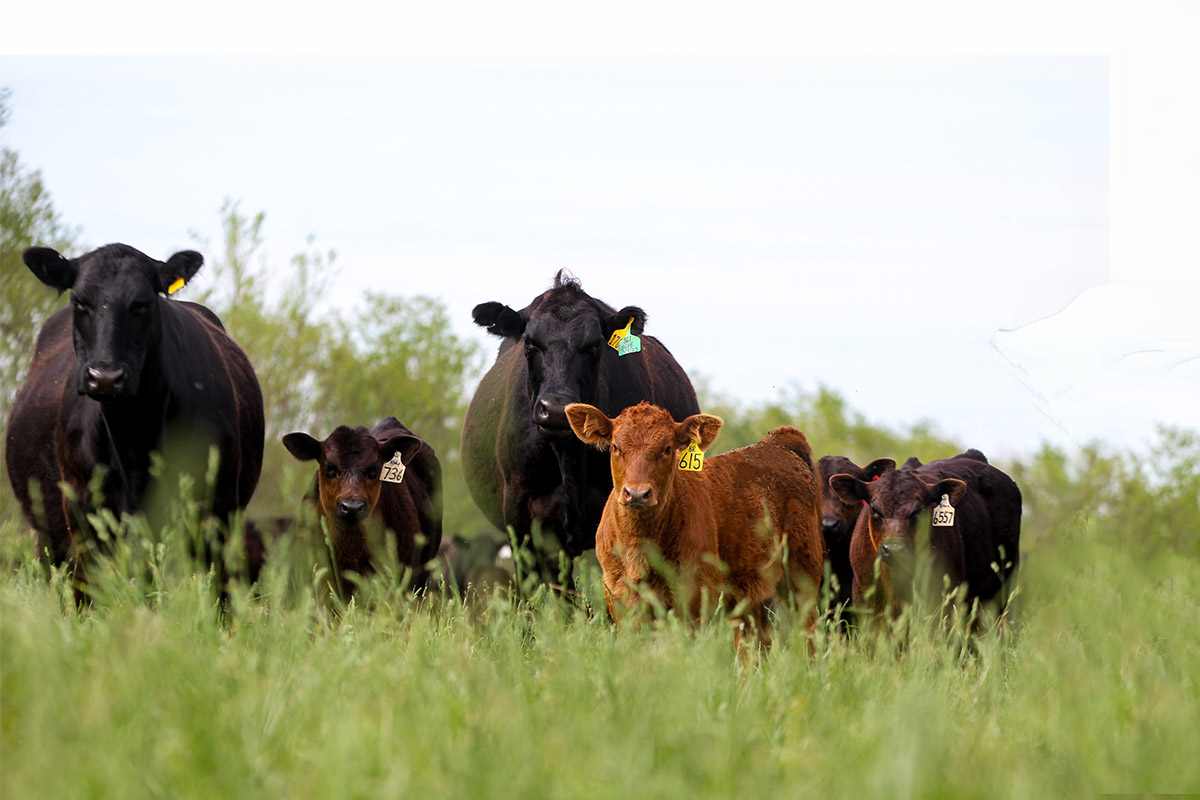Asian Longhorned Tick Announcement
Illinois becomes 20th state with Asian longhorned ticks; beef producers advised to be vigilant about animal health threat
Today, state officials confirmed that Asian longhorned ticks have been identified for the first time within the borders of Illinois, making the twentieth state to discover this invasive species that does harbor a threat to cattle.
The tick was found on April 12 during routine active tick surveillance in Morgan County as part of an Illinois Department of Public Health grant-funded active tick surveillance program. Additional surveillance in the area on April 24 discovered two additional Asian longhorned ticks.
Identification was confirmed by entomologists at the National Veterinary Services Laboratory.
While the tick was first introduced to the U.S. in 2017, this is the first known collection of this tick species from anywhere in Illinois.

Asian longhorned ticks are light brown in color and are very small, often smaller than a sesame seed. The tick is capable of carrying tick borne diseases that affect cattle. In addition, a female can reproduce without a mate and lay up to 2,000 eggs at a time. Therefore, numbers may expand rapidly.
“In some cases of severe H. longicornis infestation, livestock death has been reported,” said Dr. Mark Ernst, Illinois Department of Agriculture State Veterinarian. “Farmers and producers should continue working with their veterinarian to maintain an appropriate management plan.”
The IDOA, IDPH and the Illinois Department of Natural Resources (IDNR) are monitoring the situation in partnership with the United States Department of Agriculture.
“IDPH’s active tick surveillance program was instrumental in discovering the Asian long horned tick in Illinois,” said IDPH Director Dr. Sameer Vohra. “Although the role that this tick will play in the transmission of infections in humans is yet to be determined, the Department of Public Health is working closing with the Department of Agriculture to monitor the presence of the tick and investigate the risk it carries to both humans and livestock.”
If anyone believes they have identified H. longicornis on an animal, the tick should be placed in a jar with isopropyl alcohol, and the Department of Agriculture should be contacted at (217) 782-4944.
Guidance from Dr. Teresa Steckler, Extension Educator at the Dixon Springs Agricultural Centern, University of Illinois Extension
The tick is invasive, originally from east Asia and can carry pathogens that can cause disease in humans and livestock. In US cattle the primary known disease of concern thus far is Theileria (Theileria orientalis Ikeda strain; Cattle theileriosis). This disease will present clinically like anaplasmosis. Anaplasmosis clinical symptoms include: anemia, weak, lethargic, go off feed, run a fever and the mucous membranes become pale and possibly yellow from the waste products of red blood cell destruction. Mature cattle are the most susceptible to severe clinical signs of anaplasmosis while cattle under six months of age generally show no signs. However, pregnant heifers and calves are the most susceptible to Theileria. There is no approved treatment or effective vaccine and cattle that recover from initial illness become chronic carriers of disease. While ALT can spread Theileria routine husbandry practices can also spread Theileria.
Large numbers of ALT have been found on animals (cattle and sheep) which can result in severe distress or even death through exsanguination. Tick control methods are even more important now that this tick has been found in Illinois. There are a couple of items to keep in mind:
- Use pour-on external parasite control at the appropriate rates.
- When working cattle look around the ears, below the tail, brisket areas for large numbers of small ticks. The ALTs are light brown in color and are very small, often smaller than a sesame seed. They are difficult to detect because they are very small. The adult female is only about the size of a pea when it is full of blood (fully engorged).
- When bringing cattle in from other farms, out of state, or home from livestock shows quarantine the cattle and treat with an external parasite control. Before turn-out, inspect the animals for ticks.
- Consult your herd veterinarian on appropriate herd health protocols.
Why is this announcement important to my farm?
- Mobility: The Asian Longhorned Tick is extremely mobile. It can attach to people, birds, pets, and wild animals, which spread the tick to new locations.
- Longevity: The tick can survive for up to a year in the environment without attaching to a host. The female tick can also reproduce without a mate, laying 1,000 to 2,000 eggs at a time. This means that if an animal picks up a single tick, it could soon be covered in thousands of ticks.
- Detection: Because the non-engorged tick is smaller than a sesame seed, producers should inspect their livestock and use topical therapies, as needed, to control ticks.
- Disease: The tick spreads disease and carries the blood parasite Theileria orientalis, which results in infectious bovine anemia, or Theileriosis. There is currently no approved treatment in the U.S. against Theileria orientalis, leaving cattle at risk.
- Check your body and clothing for ticks upon return from potentially tick-infested areas, including your own backyard. Use a hand-held or full-length mirror to view all parts of your body. Place tick-infested clothes in a dryer on high heat for at least 10 minutes to kill ticks on dry clothing after you come indoors.
- Shower soon after being outdoors. Showering within two hours of coming indoors has been shown to reduce your risk of getting Lyme disease and may be effective in reducing the risk of other tickborne diseases. Showering may help wash off unattached ticks and is a good time to do a tick check.
- Talk to your veterinarian about tickborne diseases in your area and prevention products for your pets and livestock.
For questions, please contact the Illinois Beef Association office at (217) 787-4280
Posted: May 6, 2024 5:30PM
